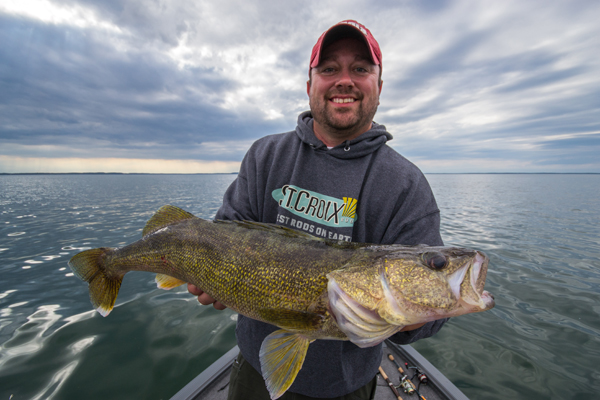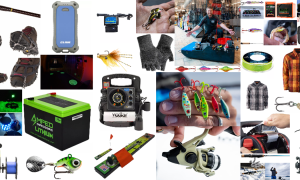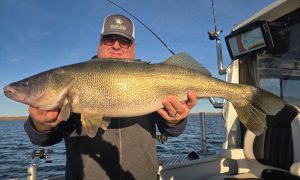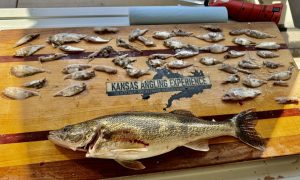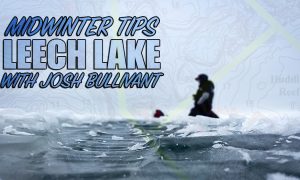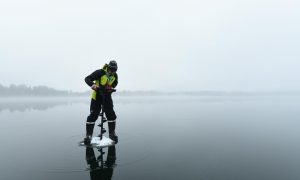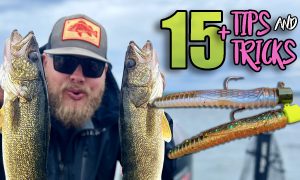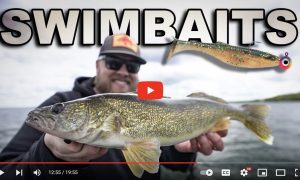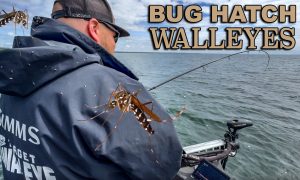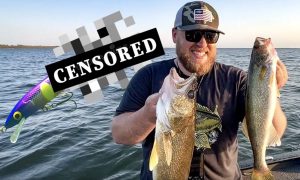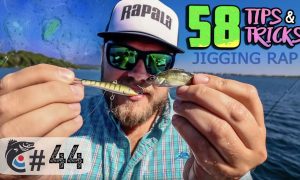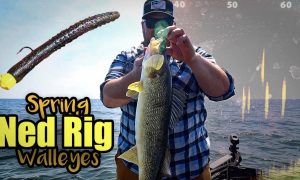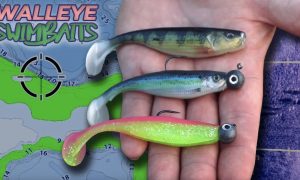Spinners, crawler harnesses, spin-rigs — no matter the name, they secure some prime-time real estate in any walleye-angler’s arsenal — and for good reason. With or without a weight, they stimulate an array of fish senses from vibration and color, to scent and taste. For many anglers, especially on big waters, they constitute the bulk of their summer offerings, catching fish from May through September.
When they work
Traditionally, walleye anglers have looked to spinners after the first major bug hatch of the year, and taking advantage of the extra focus walleyes place on worms and larval forage. When paired with a crawler and “buggy” colors, truly they can be hatch-busters, triggering reaction strikes to stuffed walleyes packed full of insects.
That said, the true beauty of spinners is the variations in bait, colors, size, and shape which you can use to your advantage in a variety of systems, times of year, clarity, and forage preference.
For me, spinners are another tool in the shed that comes out when its use is the most applicable. Large stretches of scattered fish in consistent depth ranges call for cranks.
Tighter bunches of heavily schooled ‘eyes on tight breaks or significant structural elements can mean I’ll drop anything from Rapala Jigging Raps, bobbers, and jig/leech combinations, to rigs with snelled live-bait offerings.
It’s the gray area in between, and even some of the above described scenarios that spinner rig fishing can excel in. Scattered schools at various depths along a breakline, nomadic wanderers on a windswept sand flat, and even walleyes buried in pockets of cabbage call for spinner rigs fished in a variety of ways.
Components
Your standard rig consists of a lead weight, 3′ snell or longer for clear water, a clevis, spinner, beads, and hooks with bait. From there, it’s a tinkerer’s dream come true, with any and all components subject to change.
The details surrounding spinner tweaks are several articles unto themselves, so I’ll stick with the basics that I prefer.
Bottom bouncers work well and are convenient in most scenarios, with my general rule of thumb being an ounce of weight for every 10′ of depth. 2-oz sinkers then cover most walleye fishing scenarios, with 3-oz varieties being useful in fishing near 30′ or in rough seas.
From there, I like 6′ snells, except in snaggy conditions where I’ll opt to keep it closer to 3′ long.
Quick change clevis’s these days allow you to continually swap blade colors, sizes, and shapes, but I like to keep this simple where possible. #2 or #3 Colorado blades in gold, silver, perch colorings, and some browns to mimic larvae, are what you should look to stock up on first.
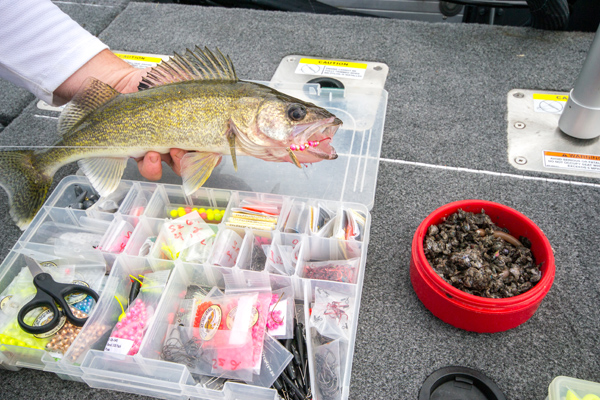 There are times where certain bodies of water will call for certain colors and sizes. On Lake of the Woods for example, I like the biggest gold hammered blades you can find (think of the sizes you find on musky bucktails).
There are times where certain bodies of water will call for certain colors and sizes. On Lake of the Woods for example, I like the biggest gold hammered blades you can find (think of the sizes you find on musky bucktails).
Extra flash, vibration, and bulk will not deter larger fish from your offering, but may cost you some action if choosing quality over quantity.
Hook configurations will vary from singles to handle leeches and minnows, to 2- or 3-hook varieties for crawlers. Many anglers will tie on a small treble as the terminal end of the rig, especially when using crawlers.
Speed
As for fishing the rig itself, I like to pull them around 1.0 mph for the most part, and as fast as 1.8 mph, depending on what the fish are telling me to do. Experiment by driving over schools of fish at various speeds to see what they prefer.
Most anglers won’t pull slower than a mile per hour, but I’ll occasionally slow it down when I’m pulling through fish that are finicky.
Your spinner blade may not travel a full revolution, but will wobble below the line and clevis at slower speeds. More importantly, that bait will drift closer to bottom without lift from the spinning blade.
Setting the hook
Many experienced anglers will hold the rod in their hand, but great way to get started is to put the rod in the holder and let the fish hang itself. On some days, the rod holder will out-produce the angler in terms of hooking percentage. I prefer to hold myself both for feeling the strike, and also to impart some variation and action into the rig.
Another reason to hold the rod is to feel for subtle changes in bottom composition, as well as to make sure your bottom-bouncer is holding near bottom, which is a critical part of the rig’s success.
Once bit, there’s always room for argument on which is the “proper” way to set the hook and get walleyes boatside. I’ve found that for hungry and active eyes, a simple sweep with some reeling to pick up the slack is all it takes.
For finicky fish that follow and nip at the back end of the rig, I’ll usually point the rod straight back to the fish, let the speed of the boat pick up the slack, and power-sweep forward while reeling to load up the rod.
Longer rods with a soft tip and solid backbone allow you to feel the strike and have the “umph” to push hooks through bait and into hard walleye mouths.
Resist the urge to feed fish too much line as in other live-bait rigging situations. Extra hardware and the tethered heft of a bottom bouncer can lead to too many pop-and-drop type situations.
Tying your own
One of the best parts of fishing spinners for me personally is the satisfaction I have in tying them up and catching fish with them. Learn how to tie a snell for a crawler harness for the multiple hooked rigs, or use your favorite knot for tying in single hooks, then start adding beads and blades.
The components are fairly cheap, relatively plentiful and available, and offer a great way to kill some road time for your passengers on fishing trips. Take some basic assumptions on bait selection, sizes, and colors, then roll with it. Let the fish tell you what they like, and have fun learning what it takes to offer it to them.

